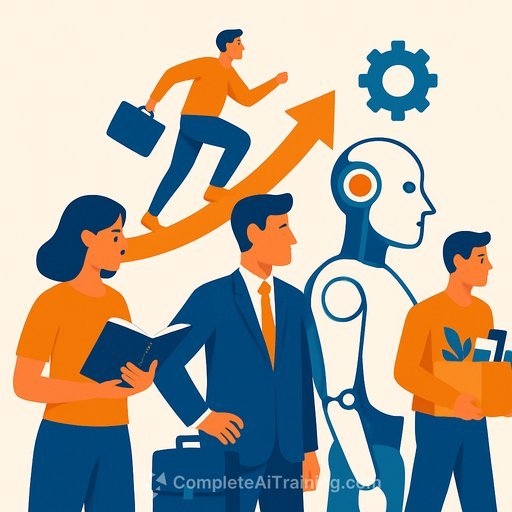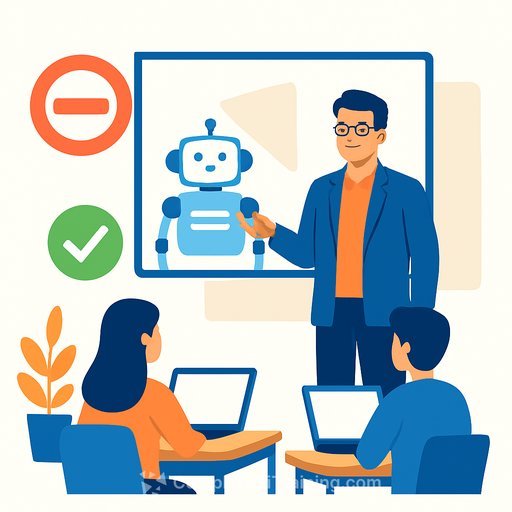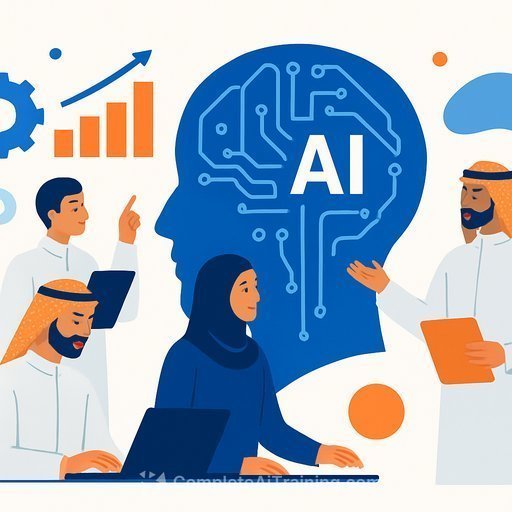Education AI Boom: 2025 Is Forcing a Rethink of Learning
AI isn't a silver bullet for education. It's a forcing function. Degrees, certificates, and annual trainings no longer guarantee relevance when skills expire in two to three years.
Nearly half of talent development leaders in LinkedIn's 2025 Workplace Learning Report see a skills crisis. The AI-in-education market is projected to grow to about $32.27B by 2030 and up to $127.2B by 2035, fueled by demand for personalized, workforce-aligned learning at scale.
The Signal in the Noise
- Udemy reports AI-related enrollments up fivefold year over year, topping 11 million, with five to eight learners joining an AI course every minute.
- Budgets are shifting from one-off training to continuous skill-building embedded in daily workflows.
- Udemy's Q2 2025 revenue reached $199.9M, up 3% year over year, reflecting demand for practical AI proficiency including tools like Microsoft Copilot and GitHub Copilot.
"We're seeing skills become obsolete in two to three years instead of decades. Think of it like Netflix, but for education," says Hugo Sarrazin, Udemy's CEO. Expect universities to serve as launchpads, pairing degrees with lifelong digital memberships.
What This Means for Education Leaders
- Move from curriculum set-and-forget to continuous skill refresh tied to job tasks and emerging tools.
- Build AI fluency as a baseline. Layer critical thinking, communication, and judgment on top.
- Treat learning like fitness: frequent reps, real-world practice, and visible progress tracking.
- Design programs that deliver "just-in-time" microlearning inside the tools people already use.
Practice at Scale: From Content to Context
Skills stick when learners practice in context. Udemy's AI Role Play, launched in May, lets employees rehearse negotiations, feedback, and conflict scenarios with AI-driven simulations. Expect "play and test runs" to move from conversation practice to action-oriented simulations next.
- Simulate common role scenarios (sales calls, incident response, parent-teacher conferences, student advising).
- Pair simulations with rubrics and immediate feedback. Track time-to-proficiency and on-the-job performance changes.
Gen Z Is Adaptive-First (And That's the Advantage)
According to Udemy, 84% of Gen Z professionals prioritize adaptive skills-decision-making, communication, critical thinking-over purely technical training. They grew up with constant technology change.
Your move: integrate AI fluency with adaptive skill reps. Make judgment, not tool use, the centerpiece of assessment.
Responsible Integration: Progress With Proof
"Responsible institutions must ensure that claims are backed by real evidence and that deployment actually benefits students globally," says Shai Reshef of University of the People. Personalization is promising, but flawed data and biased algorithms can amplify inequities.
Kavitta Ghai, CEO of Nectir, adds that one poor rollout can trigger headlines that distort reality. The responsible path: controlled pilots, measured outcomes, and iteration. AI should act like a Socratic tutor-guiding through mistakes, not doing the work-so learners keep their critical thinking edge.
Pilot Blueprint (Use This Before Any Rollout)
- Define one clear outcome (e.g., reduce support ticket resolution time by 20%, improve rubric-aligned writing scores by one level).
- Select a representative cohort and a control group.
- Set governance: human-in-the-loop review, bias checks, data privacy, model update cadence.
- Instrument everything: pre/post assessments, on-the-job KPIs, satisfaction, and cost per skill.
- Disaggregate results by demographic segments to detect inequities early.
- Run for 6-12 weeks. Publish results. Iterate or stop.
Build Your "Skill Fitness" System
- Skill map: define 10-20 priority skills per role (AI fluency, prompt quality, data literacy, decision-making, communication).
- Baseline: short diagnostic to place learners and personalize next steps.
- Microlearning in the flow: 5-10 minute lessons embedded in email, LMS, IDEs, or CRM.
- Deliberate practice: weekly AI role-plays, peer feedback, and reflection prompts.
- Assessments: scenario-based performance tasks, not multiple-choice only.
- Credentials: stackable badges that map to role progression and compensation.
- Metrics: time-to-skill, utilization in real work, quality lift, error reduction, and manager confidence.
90-Day Action Plan
- Days 0-30: Pick two roles with clear business KPIs. Draft a skill map and assessments. Select AI tools and guardrails.
- Days 31-60: Launch a small pilot with AI simulations and microlearning in the flow of work. Collect baseline and mid-point data.
- Days 61-90: Analyze outcomes, publish a short report, and decide: scale, iterate, or stop. Start faculty/train-the-trainer sessions.
Culture Over Content
Learning is becoming a shared discipline, not a one-time event. "AI will become an invisible infrastructure. You won't think about using AI to learn; learning will be AI-enhanced by default," says Sarrazin. Universities and AI will complement each other-format flexes to the learner, fundamentals stay strong.
References and Next Steps
- LinkedIn Workplace Learning Report
- Udemy 2026 Global Learning and Skills Trends Report
- Plan curricula by job role (Complete AI Training)
Your membership also unlocks:






